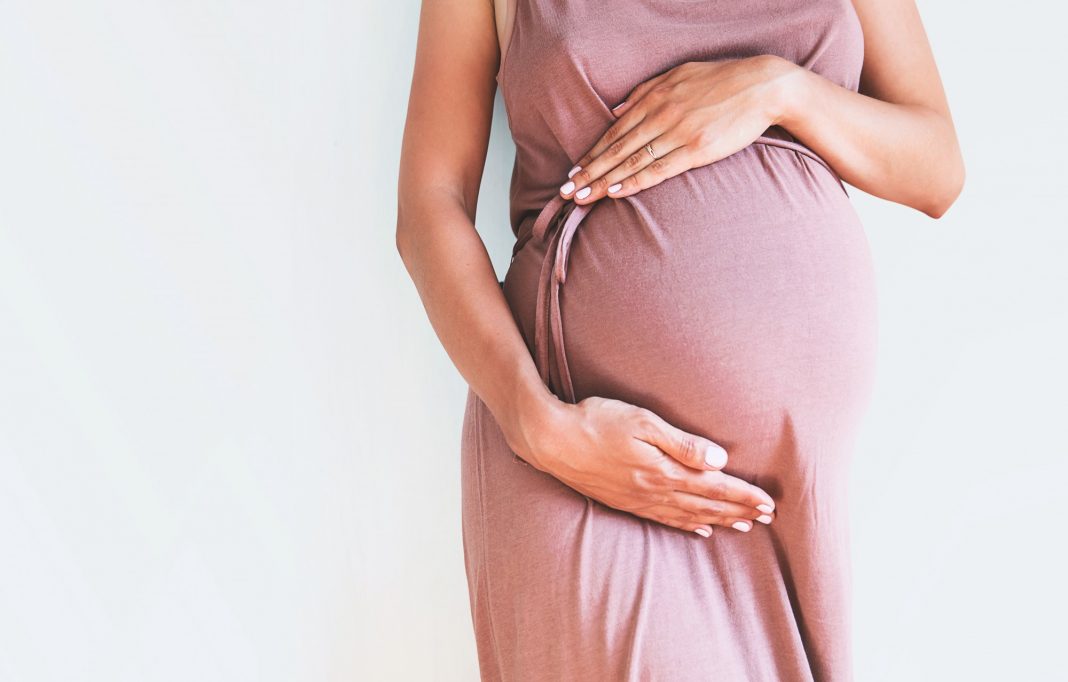Pregnancy tends to hold a lot of health concerns on one plate. There’s a long list of foods you cannot eat, your body transitions through significant physical changes, and hormones take over. If that isn’t enough for mothers to be, there’s also a rather large concern with vitamin D deficiency among pregnant women.
According to the Australian Health Survey 2011-12 (ABS 2014) about 23 per cent of Australian adults had vitamin D levels lower than 50nmol/lt¹, which is generally considered inadequate for bone and overall health.
“Prevalence of low vitamin D varies, but we know that it’s lower in summer and higher in winter [and] more common in major cities¹,” said Kellie Wilton, Principal Midwifery Officer at the Australian College of Midwives.
She adds that “26.5 per cent of Aboriginal and Torres Strait Islander adults also have low vitamin D” and the level is lower when people live more remotely.¹
Specifically, for women attending antenatal care in the West Australian town of Kalgoorlie, 56 per cent of Aboriginal women and 20 per cent of non-Aboriginal women had vitamin D levels lower than 50nmol/lt.²
These statistics highlight that Aboriginal pregnant women living in remote areas may be at higher risk of lower vitamin D levels.
Pharmacist Kavita Nadan, of Chemist Discount Centre Endeavour Hills in Victoria, says low vitamin D levels are a very common issue presented within pharmacy.
“More recently, with the restriction in movement and/or exercise outdoors, I’ve noticed more children coming in for vitamin D,” she said.
“Greater time spent indoors for work, and increase in sunscreen use have also contributed to declining vitamin D levels in the population.
“Pregnant women have been coming in for vitamin D deficiency for a long time since I’ve been a pharmacist.”
Risks of low vitamin D
Ms Wilton says low vitamin D levels during pregnancy have been associated with complications for women and their babies, including “gestational diabetes, pre-eclampsia, postpartum haemorrhage, preterm birth, small for gestational age babies and foetal macrosomia”.
According to the Women and Newborn Health Service, part of the WA government’s North Metropolitan Health Service, maternal vitamin D deficiency in pregnancy is associated with⁴:
- Low serum calcium in the newborn, with or without convulsions.
- Rickets.
- Defective tooth enamel.
“Low vitamin D levels can cause fatigue, mood changes, depression, muscle aches and bone pain,” Ms Nadan said. “Long-term effects of deficiency can lead to osteoporosis, cardiovascular diseases and potentially asthma (in children) and cancer.”
Effects on foetal growth have also been associated with maternal vitamin D deficiency.
Population-based studies have found:
- Lower birth weights and a higher risk of being small for gestational age.⁴
- Lower neonatal bone mineral accrual to be lower in the vitamin D deficient groups, although bone mineral density differences were not statistically significant.⁴
- Greater femoral metaphyseal cross-sectional area and a higher femoral splaying index at 19 and 34 weeks’ pregnancy, suggesting that maternal vitamin D deficiency can influence foetal femoral development as early as 19 weeks’ pregnancy.
Elaborating on the long-term consequences of vitamin D deficiency in pregnant women, Ms Nadan says that, apart from the risk of pre-eclampsia, there is also the possibility of developing diabetes in pregnancy.
“For infants, this can result in low birth weight, low calcium levels and potential for developing asthma and type 1 diabetes,” she said.
Recommendations and sources of vitamin D
Vitamin D is produced predominantly by our skin when it’s exposed to sunlight, especially ultraviolet B (UVB) photons, which initiates conversion in the skin and the vitamin D is rapidly stored in fat or metabolised in the liver.⁵
There are few food sources from which vitamin D can be absorbed. It presents naturally in fish and some plants but is not found in significant amounts in meat, poultry, dairy products (without fortification), or the most commonly eaten fruits and vegetables.⁵
The US Food and Nutrition Board’s current recommendation for adequate intake of vitamin D is 200 IU/d for both pregnant and non-pregnant individuals aged 0-50 years.⁵
Using vitamin D supplements
Ms Wilton explains the process in which a woman and her health team can determine whether she will need to incorporate vitamin D supplements into her diet.
“Women should be screened for vitamin D deficiency during their routine antenatal serology screening, and if deficient, commence therapy immediately,” she said.
“Their status can be rechecked at 26 to 28 weeks during screening for gestational diabetes or at any other time in the third trimester opportunistically to see if there’s been a good therapeutic response to supplementation. Any woman who has low vitamin D during pregnancy should be offered vitamin D therapy for their infant.”
According to the South Australian Perinatal Practice Guidelines, on the first antenatal visit, women will be assessed on the following factors that could put them at higher risk of a low vitamin D level:
- Darker skin (eg, Aboriginal, North African, Indian, Sri Lankan).⁶
- Veiled (eg, Muslim).⁶
- Newly arrived refugee.⁶
- Limited sun exposure (eg, night shift or office worker).⁶
- BMI >40.⁶
While it’s best for pharmacists to be across these risk factors, it’s crucial that they advise patients to see their GP or seek help from another health professional in examining such risks, the guidelines say.
Ms Nadan discusses how vitamin D supplements, in the form of tablets, capsules or liquids, can provide aid during pregnancy.
“Vitamin D is a crucial element for calcium metabolism and ultimately bone strength and development,” she said. “Calcium requirements increase in the third trimesters and so vitamin D levels are very important to ensure this is attained.
“Vitamin D supplementation also helps to reduce the likeliness of pre-eclampsia and low vitamin D levels in the infant.”
Advice for pharmacists
Ms Nadan says pharmacists should recommend “the usual dose of 1000iu to 2000iu of vitamin D if providing it without a recommendation from a prescriber”.
“Higher doses will need to be monitored more closely,” she said, adding that advice should be given on increasing vitamin D levels through sun exposure and diet.
“Vitamin D is highly recommended in pregnancy,” Ms Nadan said.
“Usually, an initial blood test will indicate what levels of vitamin D are present, but due to reduced risk of harm and toxicity from taking it, a daily supplement will be sufficient for pregnancy for those who are in the high-risk bracket (unless an alternative dose is recommended by the prescriber).
“It would be beneficial to approach the treatment in a holistic manner and explain the benefits of increased sun exposure, regular blood tests and increasing dietary intake of vitamin D.”
Ms Nadan continued: “400mcg of vitamin D is highly recommended in breastfeeding children as there are negligible amounts in breast milk – compared with formula. Children with risk factors – dark skin, lack of sun exposure – should also be investigated for deficiency and recommended supplementation.”
To read the full feature as it appears in the October issue of Retail Pharmacy magazine, visit: retailpharmacymagazine.com.au/magazine/retail-pharmacy-october-2021/
References
- ‘Australian Health Survey: Biomedical Results for Nutrients, 2011-12’. ABS (2014) 0.55.006. Canberra: Australian Bureau of Statistics.
- Australian Government Department of Health, 2019. ‘Vitamin D status’. gov.au/resources/pregnancy-care-guidelines/part-g-targeted-maternal-health-tests/vitamin-d-status
- Willix C, et al, 2015. ‘A comparison of vitamin D levels in two antenatal population in regional Western Australia – Tjindoo Ba Thonee Thurra: sunshine for the pregnant belly’. org.au/afp/2015/march/a-comparison-of-vitamin-d-levels-in-two-antenatal-populations-in-regional-western-australia-%E2%80%93-%E2%80%98tjindoo-ba-thonee-thurra%E2%80%99-sunshine-for-the-pregnant-belly/
- Department of Health, Western Australia, 2016. ‘Vitamin D deficiency in pregnancy’. health.wa.gov.au/~/media/Files/Hospitals/WNHS/For%20health%20professionals/Clinical%20guidelines/OG/WNHS.OG.VitaminDDeficiencyinPregnancy.pdf
- Mulligan ML, et al. ‘Implications of vitamin D deficiency in pregnancy and lactation’. doi: 1016/j.ajog.2009.09.002 /pubmed.ncbi.nlm.nih.gov/19846050/
- Department for Health and Wellbeing, Government of South Australia. Vitamin D status in Pregnancy. sa.gov.au/wps/wcm/connect/a7af1a004eee85fc8135a36a7ac0d6e4/Vitamin+D+Status+in+Pregnancy_PPG_v4_0.pdf?MOD=AJPERES&CACHEID=ROOTWORKSPACE-a7af1a004eee85fc8135a36a7ac0d6e4-nxzd02Q






